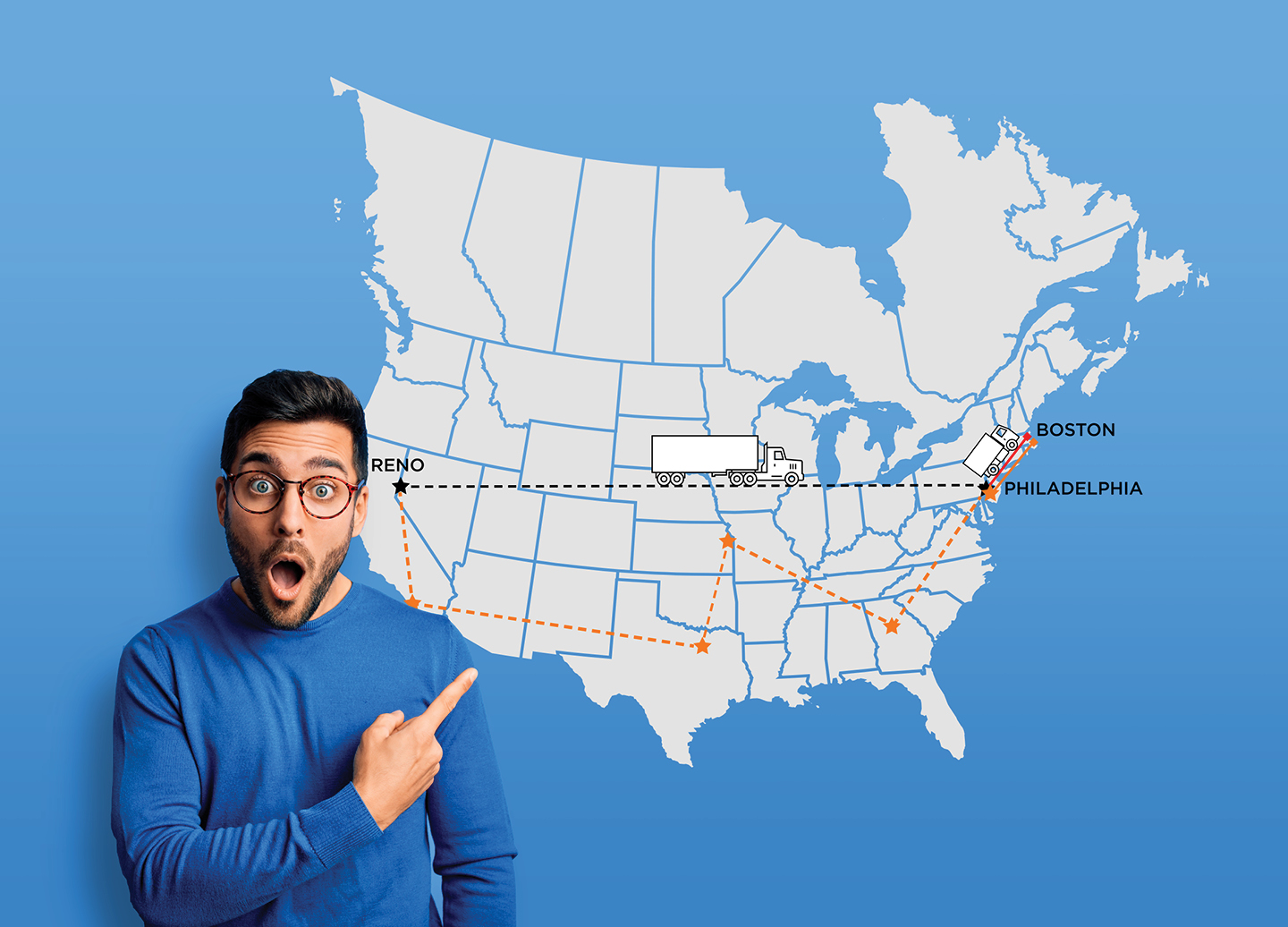Zone skipping is a logistics strategy that top shippers use to minimize time in transit while cutting costs. Should you use it?
With 10 years of e-commerce growth in just 3 months, the pandemic has drastically changed the functionality and efficiency of many business’ complex logistics systems. Along those same lines, elevated transportation costs and transit times have affected nearly every size shipper and business in the world. Resilient businesses have adopted strategies for curbing these costs and maintaining a positive customer experience.
One such plan of action is a multi-carrier strategy that includes zone skipping to manage elevated capacity. But what is zone skipping? Let’s dive in to find out how zone skipping can transform your transportation spend and cut delivery time.
Zone Skipping 101
Zone skipping is the logistics practice of consolidating parcel packages or shipments and then shipping them across multiple areas or zones to a parcel carrier’s regional hub that is closer to the packages’ final destination. At the hub, the parcel carrier separates the parcels and performs last mile delivery. The shipper has the opportunity to take advantage of regional rates and carriers, rather than the national rates and carriers, avoid the higher costs and transit times of directly shipping across multiple zones, and expand their shipping capacity by onboarding more carrier partners.
Here’s an example:
Zone Skipping and Delivery Speed
With customer expectations and brand loyalties in the balance, the need to exceed delivery expectations for shippers is at an all-time high. For shipments originated from distribution centers (DCs), localized delivery efficiencies seen in ship-from-store (SFS) strategies can be a challenge to match. Zone Skipping allows for DC originated shipments to minimize the disadvantage presented with time-in-transit and delivery range.
When utilizing zone skipping, shipments don’t need to travel to unnecessary local sorting facilities close to the DC origin – they can skip ahead and be delivered by local carrier hubs much more quickly.
Zone Skipping and Delivery Costs
With the pandemic skyrocketing shipping costs, every shipper is concerned with overall transportation spend. With fewer stops before the package reaches its final destination, shippers can skip the costs that come with sorting at regional sorting facilities, because packages are delivered closer to that final destination. Zone skipping also allows you to leverage the capacity and pricing advantages of regional carriers, even though your primary distribution facilities are not located in the carrier’s service area. How? By line hauling and injecting an aggregated load into one of the carrier’s regional hubs.
A true zone skipping strategy only works if your software can handle the added capacity. A multi-carrier shipping software should be able to apply the automated business logic to:
- Select the right carrier hub based on the package’s final destination
- Incorporate the cost of the line haul as part of the rate shopping comparison
- Produce both sets of paperwork needed to execute the zone skip:
- The consolidated freight paperwork for the line haul from your facility to the carrier’s hub
- The carrier compliant shipping labels for the parcels being injected into the carrier’s hub
Overall, zone skipping is just one logistics strategy that can be in your arsenal to prepare for the upcoming peak season. Remember that it all boils down to having the right software that can allow for these additional cost savings while promoting a positive customer experience. Reach out now to learn how ProShip’s powerful multi-carrier shipping software can strengthen your supply chain game plan with speed, compliance, reliability and experience.

Clint Boaz is Senior Sales Engineer for ProShip Multi-Carrier Shipping Software, where he leverages his expertise to show shippers how integrated multi-carrier shipping solutions can bring efficiencies to their business. Prior to joining ProShip, Clint held various roles at UPS. Clint lives in Tulsa, Oklahoma with his wife and three children.
Jeff Lukaszewski is the Director of R&D for ProShip Multi-Carrier Shipping Software. He has been with ProShip since 2010, where he started on the professional services team designing and deploying over 100 customer solutions. After moving to R&D, he has helped with the design and development of over 50 small parcel and LTL carrier modules. Jeff has been in the logistics industry since 2004.


Tony Verrill is Director of Enterprise Sales at ProShip, with 10 years of experience in multi-carrier shipping across solution sales and partnerships. Tony enables today’s top retailers, manufacturers and third party logistics providers to streamline their omnichannel fulfillment strategies.

 Back to Blog
Back to Blog






